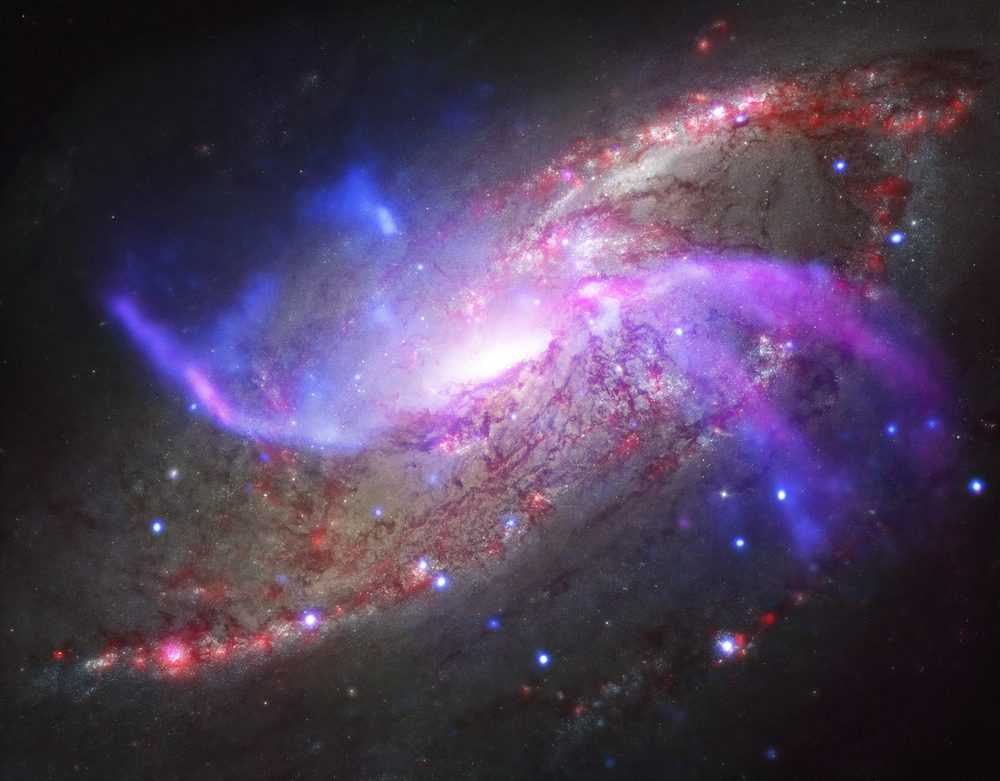The Cosmos with NGC 4258
A new composite image released last week by NASA shows a galactic light show taking place 23 million light years away in NGC 4258, a spiral galaxy similar to our own Milky Way. NGC 4258 has two extra spiral arms which reveal a color-filled glow in X-ray, optical and radio light. The stunning display is the result of a black hole, shock waves, and vast amounts of gas which display as different colors based on the instruments NASA used to capture the data. Messier 106 (also known as NGC 4258) is an intermediate spiral galaxy in the constellation Canes Venatici. It was discovered by Pierre Méchain in 1781. M106 is at a distance of about 22 to 25 million light-years away from Earth. M106 contains an active nucleus classified as a Type 2 Seyfert, and the presence of a central supermassive black hole has been demonstrated from radio-wavelength observations of the rotation of a disk of molecular gas orbiting within the inner light-year around the black hole. NGC 4217 is a possible companion galaxy of Messier 106. A Type II supernova was observed in M106 in May 2014.
